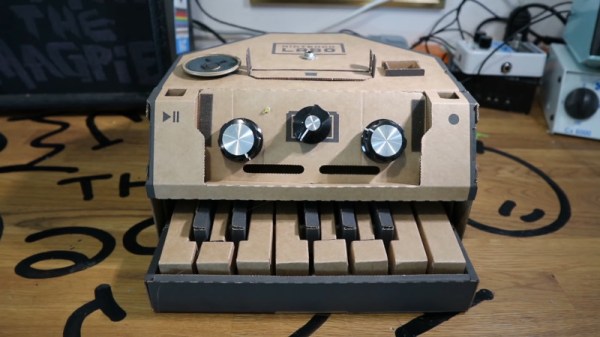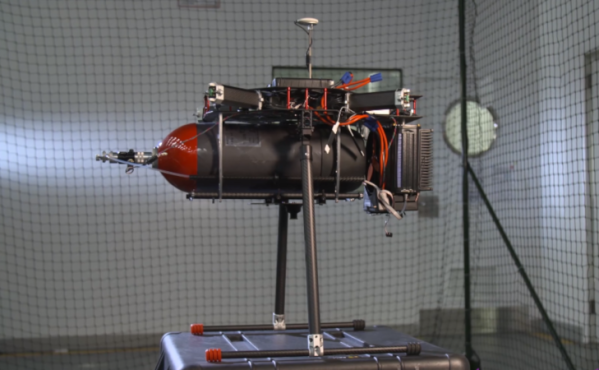Nintendo’s LABO piano is a strange kind of instrument. Hewn out of cardboard and used in combination with some advanced software, it’s entirely passive, with all the sound generation and smarts coming from the Switch console which slots into the body. [Simon the Magpie] decided that this simply wouldn’t do, and set about turning the LABO piano into a real synthesizer (Youtube link, embedded below).
In order to pull off this feat, [Simon] sourced an OKAY synth kit– a basic monophonic synthesizer designed to fit inside a 3D printed case. Instead, here it’s built inside the LABO’s roomy cardboard housing. The keyboard is reinforced with duct tape and tweaked to accept those common and horrible red SPST buttons, and the front panel is fitted with control dials where the Switch would usually sit.
After some careful crafting, the piano is ready to rock. It’s not the most responsive instrument, with the flexible cardboard struggling to reliably trigger the installed buttons, but it does work. [Simon] performs a small instrumental piece over a drum track to demonstrate that you don’t need a Nintendo Switch to have fun with the LABO piano.
Expect to see similar builds on stage at chiptune shows in the next few years – at least until mold gets the better of them. There are other ways to hack the LABO piano, too. Video after the break.
Continue reading “Nintendo’s Cardboard Piano Becomes A Real Working Instrument”















